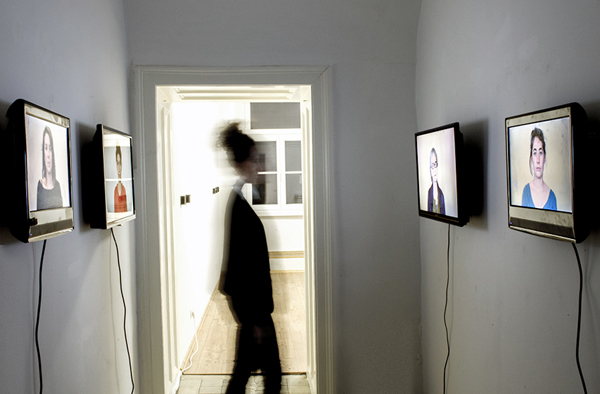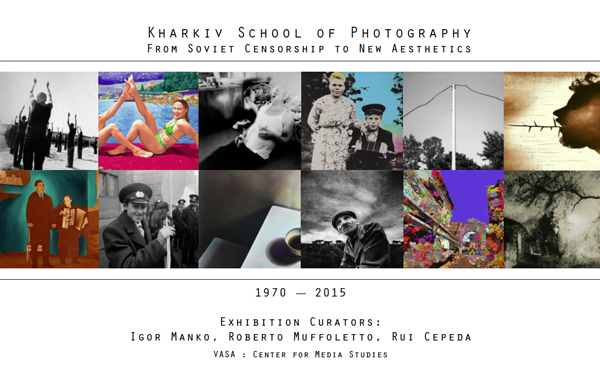Return to Theme Table of Content
Roberto Muffoletto is the founder and director of VASA and editor of VJIC.
Notably lost in photography communities are discussions related to the disappearance of the object – the photograph. The photographic image has, for the most part, existed on paper (as well as tin, glass, metal plates, etc.). With the emergence of the photography market place (galleries and books) the paper print, the object, has provided a surface of exchange. Without the object there is no currency.
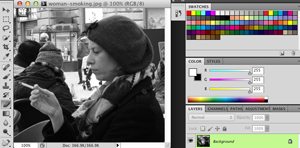 The 1990s hosted the development of the popularized digital image. Note here I use the term “image” and not “print”. The digital image was made possible by the development of digital cameras, computer technology, software to massage the image/file, and platforms for its distribution and storage. We have witnessed the effect of this on an industry built upon the needs of analog image making – paper, chemicals, cameras and film. Similar to environmental and performance art which challenged collectability and the gallery market, digital works did not fit the market paradigm unless it fell back on paper based presentation – the print. As a physical object that could be displayed, purchased, collected, and archived, the print maintained its place in the market. Digital images, if not printed on paper or some other surface, are not fixed in form or structure. Digital images do not exist in the traditional sense of the word; there is no image to hold or hang, they are codified texts/files that do not appear unless the code is translated into pixels on a screen. (In the same way that analog and digital music do not exist as heard music until it is translated to electrical impulses and a distribution system – a sound system.)
The 1990s hosted the development of the popularized digital image. Note here I use the term “image” and not “print”. The digital image was made possible by the development of digital cameras, computer technology, software to massage the image/file, and platforms for its distribution and storage. We have witnessed the effect of this on an industry built upon the needs of analog image making – paper, chemicals, cameras and film. Similar to environmental and performance art which challenged collectability and the gallery market, digital works did not fit the market paradigm unless it fell back on paper based presentation – the print. As a physical object that could be displayed, purchased, collected, and archived, the print maintained its place in the market. Digital images, if not printed on paper or some other surface, are not fixed in form or structure. Digital images do not exist in the traditional sense of the word; there is no image to hold or hang, they are codified texts/files that do not appear unless the code is translated into pixels on a screen. (In the same way that analog and digital music do not exist as heard music until it is translated to electrical impulses and a distribution system – a sound system.)
With the development of Internet environments (delivery speed, display, transmission, and storage) that support the presentation and distribution of images on a screen, the digitalized image does not exist – the object is lost. The image may be displayed and projected but it never exist unless it is printed in analog format.
The Internet has prompted platforms (virtual spaces) that support various formats for the “display” of images (some are referred to as photo sharing). Not only found in spaces such as FaceBook, Lens Garden and Flickr, the digitalization of the image, text, and sound have given birth to various exhibition spaces such as VASA. On the VASA platform nothing exists except translations from code (jpeg, gif, html, php) to a screen environment. Digital exhibition platforms reflect the traditional format of the salon or gallery (museum) but with nothing to touch except with the eye.
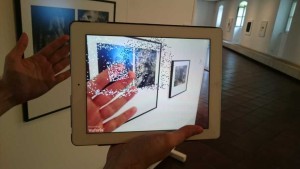 The middle ground between the object and non-object may be termed “blended”. Here authors are exploring the potential and possibilities of an interaction between the object-image and the virtual one. Through codification of the object (image) the image may extend off its surface with the aid of a digital application on a viewer. This technology carries the general term “augmented reality” (examples are provided below). Augmented reality found its start-up in children books (an extension of the pop-up book) and later in school textbooks and science museums. Here the viewer is able to interact
The middle ground between the object and non-object may be termed “blended”. Here authors are exploring the potential and possibilities of an interaction between the object-image and the virtual one. Through codification of the object (image) the image may extend off its surface with the aid of a digital application on a viewer. This technology carries the general term “augmented reality” (examples are provided below). Augmented reality found its start-up in children books (an extension of the pop-up book) and later in school textbooks and science museums. Here the viewer is able to interact
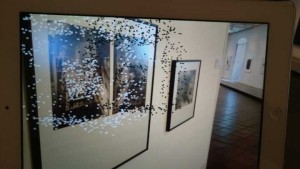 with the virtual image, turn it, see it from various positions and modify it (all of this is the result of the program embedded in the image). Here we find the interplay between the physical with the virtual. Imagine taking your photography and being able to experience it 3-dimensionally, not as a stereo image but one where you could see it from various perspectives. Along the same lines, the QR_code, or Quick Response Code, provides another format linking objects to external environments, thus changing the viewing experience and possibilities for creative work (see the work of Johannes Raimann included in the VJIC theme).
with the virtual image, turn it, see it from various positions and modify it (all of this is the result of the program embedded in the image). Here we find the interplay between the physical with the virtual. Imagine taking your photography and being able to experience it 3-dimensionally, not as a stereo image but one where you could see it from various perspectives. Along the same lines, the QR_code, or Quick Response Code, provides another format linking objects to external environments, thus changing the viewing experience and possibilities for creative work (see the work of Johannes Raimann included in the VJIC theme).
* Video demonstration of augmented reality appears at the end of the essay.
Moving on to “The photo-book in digital times” (a special VJIC theme) we begin to consider various possibilities for the presentation of photographic works (this does not exclude other forms of representation) in blended and digital, non-object form. For example, working cooperatively with “World Press Photography” the Technical University of Chemnitz (Germany) has developed a printing process where each page of a physical book becomes a speaker playing back audio embedded storage chip in the book.
World Press Talking Photography Book
In 2015 the technical university in Chemnitz published the current edition of “world press photo”. Only this time the book had more to offer than you’d expect. Every single photo speaks for itself – literally! Because every page is a fully printed loudspeaker!
Video source: Präsentation des “T-Book”
https://www.youtube.com/watch?v=HX0DVicu3NM
VASA has been exploring various forms of e-catalogs for its exhibition program. The exhibition series entitled “Kharkiv School of Photography From Soviet Censorship to New Aesthetics” includes an interactive e-catalog that connects images, videos, and text to the exhibition site. (The image below invites you to download the free interactive e-catalog)
The digital book offers many possibilities as the technology becomes more powerful and fluid. Breaking from a mind-set of the book (as well as the image) as object will take some time. This shift from object to image also addresses issues around the market place. (Around 2000 VASA started an online digital bookstore. This was a new concept for many of photographers involved. The bookstore was hit with a virus and we never put it back up.)
The point is, with the development of display technology on the Internet the photograph and book as “object” is being challenged. Photographers may now have global exhibitions, sell files or e-portfolios of their work (most museums do not let you handle their photography collection making their collection available only on screens in the museum or online). The future may find that portfolios and interest areas may be collected and stored on a memory stick, a tablet or an external drive. For example, a collector may be interested in eastern European documentary work or contemporary work in Brazil. Buying and downloading files off the web allows the collector to store and have available for viewing, making presentations, or use in classrooms. New online stores and galleries representing image makers, or individuals may sell their digital work on their own site. It is here that the market place is challenged and needs to adjust. I should note that this development had to wait for a viewing technology, as did audio to move off the CD to a digital playback device.
One more point to consider. Wet darkrooms are becoming harder to maintain as the access to the needed materials diminishes. We see schools dropping their darkrooms and replacing them with computer labs, or no lab at all except for the student owned computer. What we see is the emergence of high quality digital printers. The digital print refers to a change in the relationship between the photographer and object. The impact of this shift is clearly noted in art programs and art galleries where the object, the print, is made by a lab (a digital lab) and not the photographer. (Would we think differently about an Adams or Weston print if we knew that they did not make it. Would the economic and aesthetic value of the object change?) It is not unusual for photographers to send files to a gallery for local printing and exhibition. They may never see the final print that appears on the wall. This may not be an issue (the maker-object relationship) outside the art market place. Professional photographers (journalist, product, wedding, studio) depend on external production houses (printers as in the case of newspapers and books, labs in the case of the wedding) to produce the products their customers will consume. Non-professional image makers appear to be content with online storage and presentation of their photography. Smart phones and tablets have replaced the family photo album. Gone are the drawers filled with family photographs, replaced by Facebook.
It may be the end of the “ print as object” and the beginning of the the “dematerialization of the image”. For after all, it is the image that we are concerned with.
* Augmented reality:
Imagine how developments like augmented reality will
effect how image makers think and work, and how viewers
will experience. (RM)
IPST – 3D Augmented Reality Books
(SRC: https://www.youtube.com/watch?v=fWSSdUQF3J0)
Augmented Reality is definitely the next big thing in bridging the gap between the digital and physical world. This 3D Augmented Reality 3D Book teaches children about the layers of the earth, how are they discovered, how do they related and function, siesmic waves, comparative sizes, and more. The Institue for the Promotion of Teaching Science and Technology, an agency under the Ministry of Education, produced this Augmented Reality Learning Media that would be appealing and enjoyable to children because of its unique 3D interaction and presentation.(https://www.youtube.com/watch?v=fWSSdUQF3J0)

